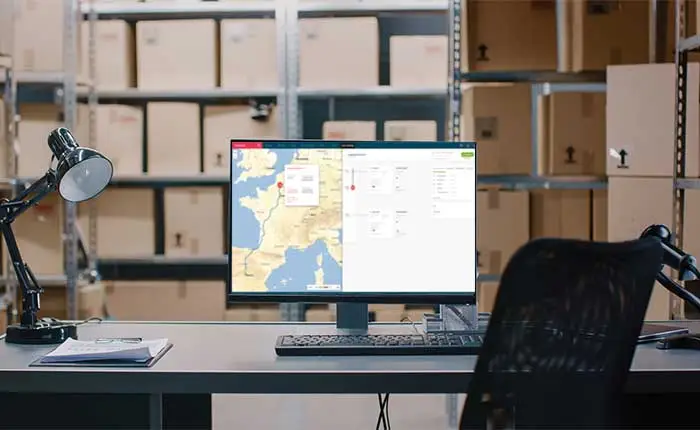

Below, you will find different questions discussing topics ranging from TMS definition to benefits or implementation.
Traditionally, businesses have relied on manual processes – such as excel sheets, phone, and email -- or several independent software solutions to manage their logistics. Today, many businesses use technology and TMS solutions to manage those.
TMS stands for transportation management system. A TMS is an end-to-end piece of software that helps businesses manage their logistics and streamline their shipping processes. It can be integrated with existing tools at your company or can become the central system to manage your logistics flows.


Selecting the right TMS solution and vendor for your business is an essential step to obtain the desired results and benefits for your supply chain. There are several factors to keep in mind when evaluating the market to make sure that the solution will support your specific challenges and will fit your business’ needs.
From technology choice to main capabilities, without forgetting security, we discuss some of the main factors you should pay attention to while evaluating and reviewing TMS providers.
The successful implementation of a TMS starts by identifying the specific needs of your business and the first challenges to be solved and involves several steps and stakeholders.
The implementation process can vary in length and complexity depending on your logistics flows and the specific chosen TMS solution, but involves stakeholders typically from several departments (supply chain, finance, IT) and includes several steps: initiation, configuration, integration, training, and activation.
Read more about the implementation of a TMS

Supply chains are responsible for up to 70% of business costs, and thus the most looked benefit after implementing a TMS solution. However, it can have an impact on several different levels of the business, from customer experience to operational efficiency, the latter remaining one of the top benefits of TMS implementation.
The ROI of implementing a TMS varies depending on the business challenges, the size of the company, and the chosen solution. However, companies can start witnessing the positive impact on their logistics flows, cash flow, and ecosystem relationships soon after the implementation is completed.
Traditionally, TMS solutions were stored on-premise and maintained with costly servers in the client’s chosen location.
Nowadays, most solutions are cloud-based, offering several benefits to the customers. Those include easy implementation and maintenance, lower fees, higher security levels, and easy scalability of the solutions for businesses that face new challenges to run their supply chain smoothly.


The scheduling and management of loading/unloading appointments is a time-consuming task, juggling excel sheets, calls, and emails with different carriers aiming at the perfect warehouse schedule without congestion and waiting time.
However, the reality is somehow different: manual administrative work is prone to error, and several conditions can impact the dock schedule such as traffic, accidents, specific requirements for some shipments….causing delays, congestion at the warehouses, and demurrage costs for the shippers.
A dock management system automates the scheduling process, reducing manual work, and ensuring a smooth warehouse.
Read more about time slot management software
Strategic sourcing contributes to the competitiveness of a business’ supply chain. It requires management to reflect the long-term future and not just the immediate needs of the company, using historical data and considering the existing and future partnerships.
A sourcing software supports organizations making decisions to improve the supply chain sourcing by gathering all necessary data and connecting the stakeholders to ensure the best results for the specific business needs, which go beyond order price today.
Read more about the impact of a TMS in strategic transportation sourcing


A TMS supports the full process of the supply management, providing businesses with end-to-end visibility of their logistics, with different capabilities to focus on the different parts of the logistics process.
A TMS allows supply chain managers to maintain a high level of service while maximizing output and efficiency. Thanks to the different capabilities offered by vendors, businesses can tackle those challenges that matter the most (freight procurement, costs, visibility, etc.) while improving the collaboration with the supply chain ecosystem parties.
Read more about the impact of a TMS in the overall supply chain
Whether you are an SME or a multinational organization, a TMS can help you streamline your logistics flows and reduce costs while gaining visibility of your processes.
Discover how Alpega TMS helped MAN have better control of their containers across sites or how Hartmann save USD 1 Million thanks to a TMS.
Dive into the Transportation Management System market and discover how it can help your business today!

Browse our Library of Free EBooks, Whitepapers and more!